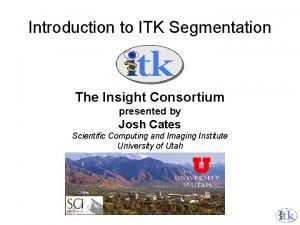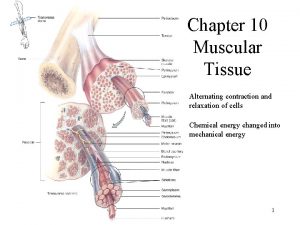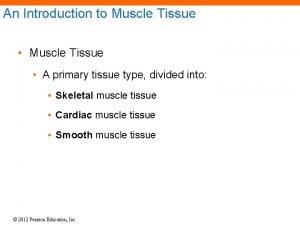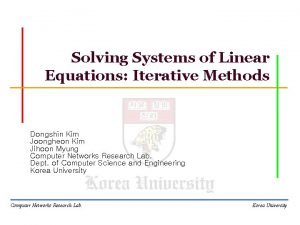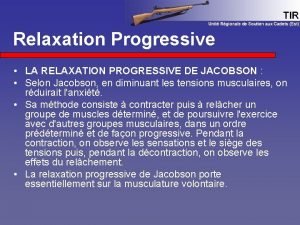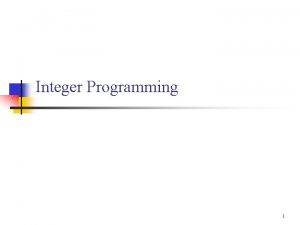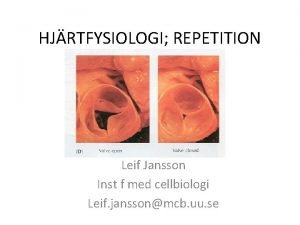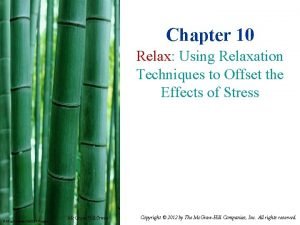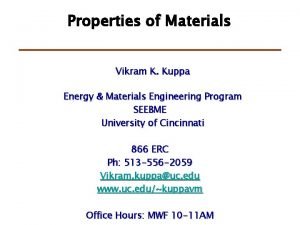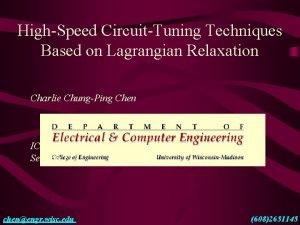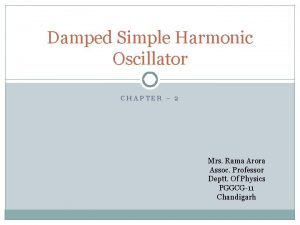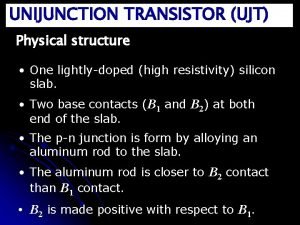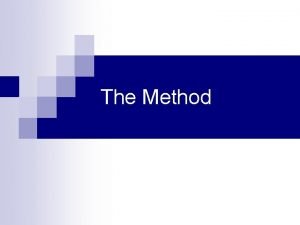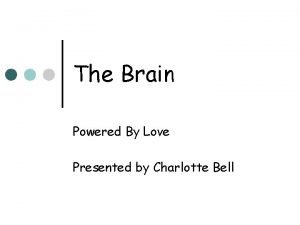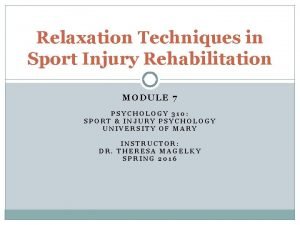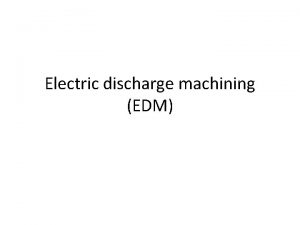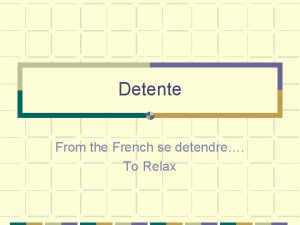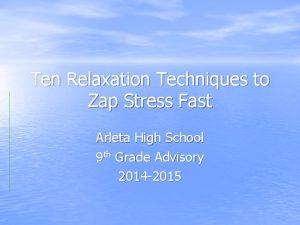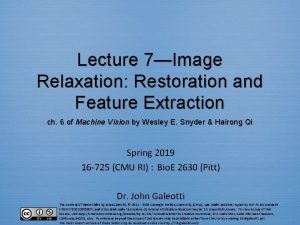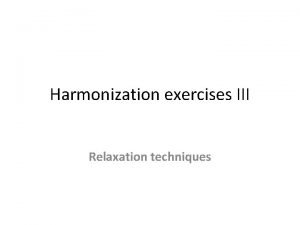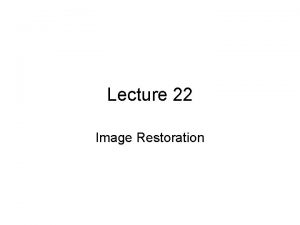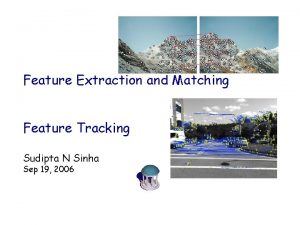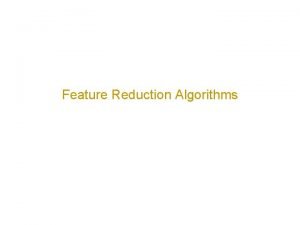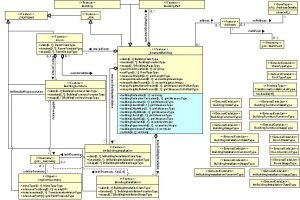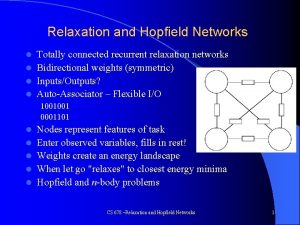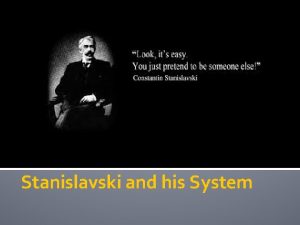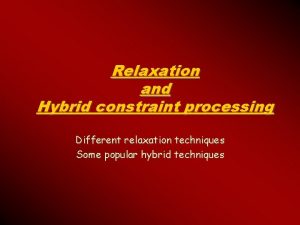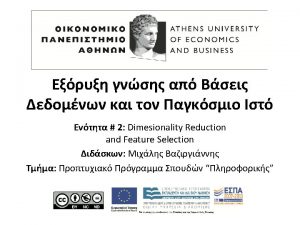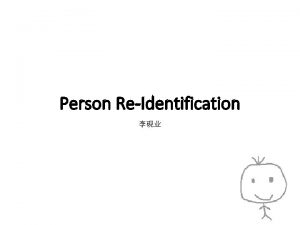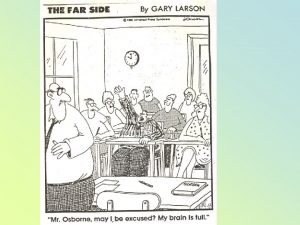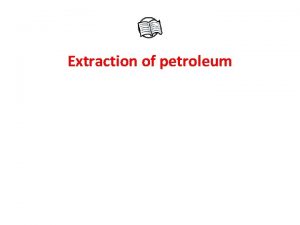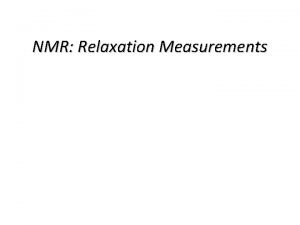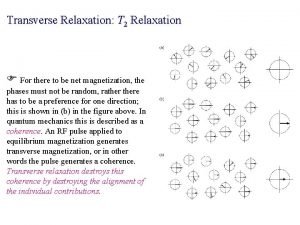Lecture 7Image Relaxation Restoration and Feature Extraction ch































- Slides: 31

Lecture 7—Image Relaxation: Restoration and Feature Extraction ch. 6 of Machine Vision by Wesley E. Snyder & Hairong Qi Spring 2016 18 -791 (CMU ECE) : 42 -735 (CMU BME) : Bio. E 2630 (Pitt) Dr. John Galeotti The content of these slides by John Galeotti, © 2012 - 2016 Carnegie Mellon University (CMU), was made possible in part by NIH NLM contract# HHSN 276201000580 P, and is licensed under a Creative Commons Attribution-Non. Commercial 3. 0 Unported License. To view a copy of this license, visit http: //creativecommons. org/licenses/by-nc/3. 0/ or send a letter to Creative Commons, 171 2 nd Street, Suite 300, San Francisco, California, 94105, USA. Permissions beyond the scope of this license may be available either from CMU or by emailing itk@galeotti. net. The most recent version of these slides may be accessed online via http: //itk. galeotti. net/

All images are degraded § Remember, all measured images are degraded § Noise (always) § Distortion = Blur (usually) § False edges original image plot § From noise § Unnoticed/Missed edges § From noise + blur noisy image plot 2

We need an “un-degrader”… §To extract “clean” features for segmentation, registration, etc. §Restoration § A-posteriori image restoration § Removes degradations from images §Feature extraction § Iterative image feature extraction § Extracts features from noisy images 3

Image relaxation § The basic operation performed by: § Restoration § Feature extraction (of the type in ch. 6) § An image relaxation process is a multistep algorithm with the properties that: § The output of a step is the same form as the input (e. g. , 2562 image to 2562 image) § Allows iteration § It converges to a bounded result § The operation on any pixel is dependent only on those pixels in some well defined, finite neighborhood of that pixel. (optional) 4

Restoration: An inverse problem §Assume: § An ideal image, f § A measured image, g § A distortion operation, D § Random noise, n This is what we want This is what we get §Put it all together: g = D( f ) + n How do we extract f ? 5

Restoration is ill-posed §Even without noise §Even if the distortion is linear blur § Inverting linear blur = deconvolution §But we want restoration to be well-posed… 6

A well-posed problem §g = D( f ) is well-posed if: § For each f, a solution exists, § The solution is unique, AND § The solution g continuously depends on the data f §Otherwise, it is ill-posed § Usually because it has a large condition number: K >> 1 7

Condition number, K §K output / input §For the linear system b = Ax § K = ||A|| ||A-1|| § K [1, ∞) 8

K for convolved blur § Why is restoration ill-posed for simple blur? § Why not just linearize a blur kernel, and then take the inverse of that matrix? § F = H-1 G § Because H is probably singular § If not, H almost certainly has a large K § So small amounts of noise in G will make the computed F almost meaningless § See the book for great examples 9

Regularization theory to the rescue! § How to handle an ill-posed problem? § Find a related well-posed problem! § One whose solution approximates that of our ill-posed problem § E. g. , try minimizing: § But unless we know something about the noise, this is the exact same problem! 10

Digression: Statistics §Remember Bayes’ rule? This is the a posteriori conditional pdf This is the a priori pdf Just a normalization constant § p( f | g ) = p( g | f ) * p( f ) / p( g ) This is what we want! It is our discrimination function. 11

Maximum a posteriori (MAP) image processing algorithms § To find the f underlying a given g: 1. Use Bayes’ rule to “compute all” p( fq | g ) § fq (the set of all possible f ) 2. Pick the fq with the maximum p( fq | g ) § § p( g ) is “useless” here (it’s constant across all fq) This is equivalent to: § f = argmax( fq) p( g | fq ) * p( fq ) Noise term Prior term 12

Probabilities of images § Based on probabilities of pixels § For each pixel i: § p( fi | gi ) p( gi | fi ) * p( fi ) § Let’s simplify: § Assume no blur (just noise) § At this point, some people would say we are denoising the image. § p( g | f ) = ∏ p( gi | fi ) § p( f ) = ∏ p( fi ) 13

Probabilities of pixel values § p( gi | fi ) § This could be the density of the noise… § Such as a Gaussian noise model § = constant * esomething § p( fi ) § This could be a Gibbs distribution… § If you model your image as an ND Markov field § = esomething § See the book for more details 14

Put the math together § Remember, we want: § f = argmax( fq) p( g | fq ) * p( fq ) § where fq (the set of all possible f ) § And remember: § p( g | f ) = ∏ p( gi | fi ) = constant * ∏ esomething § p( f ) = ∏ p( fi ) = ∏ esomething § where i (the set of all image pixels) § But we like ∑something better than ∏esomething, so take the log and solve for: § f = argmin( fq) ( ∑ p’ ( gi | fi ) + ∑ p’( fi ) ) 15

Objective functions § We can re-write the previous slide’s final equation to use objective functions for our noise and prior terms: § f = argmin(fq) ( ∑ p’( gi | fi ) + ∑ p’( fi ) ) § f = argmin(fq) ( Hn( f, g ) + H p( f ) ) § We can also combine these objective functions: § H( f, g ) = Hn( f, g ) + Hp( f ) 16

Purpose of the objective functions § Noise term Hn( f, g ): § If we assume independent, Gaussian noise for each pixel, § We tell the minimization that f should resemble g. § Prior term (a. k. a. regularization term) Hp( f ): § Tells the minimization what properties the image should have § Often, this means brightness that is: § Constant in local areas § Discontinuous at boundaries 17

Minimization is a beast! § Our objective function is not “nice” § It has many local minima § So gradient descent will not do well § We need a more powerful optimizer: § Mean field annealing (MFA) § Approximates simulated annealing § But it’s faster! § It’s also based on the mean field approximation of statistical mechanics 18

MFA § § MFA is a continuation method So it implements a homotopy § § A homotopy is a continuous deformation of one hyper-surface into another MFA procedure: 1. Distort our complex objective function into a convex hyper-surface (N-surface) § The only minima is now the global minimum 2. Gradually distort the convex N-surface back into our objective function 19

MFA: Single-Pixel Visualization Notice that we do not end up here or here 0. 3 merit of each 0. 2 possible pixel value 0. 1 0 initial global minimum 20 40 final global minimum 60 possible values for a single pixel 80 100 Continuous deformation of a function which is initially convex to find the global minimum of a non-convex function. 20

Generalized objective functions for MFA § Noise term: § (D( f ))i denotes some distortion (e. g. , blur) of image f in the vicinity of pixel I § Prior term: § represents a priori knowledge about the roughness of the image, which is altered in the course of MFA § (R( f ))i denotes some function of image f at pixel i § The prior will seek the f which causes R( f ) to be zero (or as close to zero as possible) 21

R( f ): choices, choices § Piecewise-constant images § =0 if the image is constant § 0 if the image is piecewise-constant (why? ) § The noise term will force a piecewise-constant image 22

R( f ): Piecewise-planer images § =0 if the image is a plane § 0 if the image is piecewise-planar § The noise term will force a piecewise-planar image 23

Graduated nonconvexity (GNC) § Similar to MFA § Uses a descent method § Reduces a control parameter § Can be derived using MFA as its basis § “Weak membrane” GNC is analogous to piecewiseconstant MFA § But different: § Its objective function treats the presence of edges explicitly § Pixels labeled as edges don’t count in our noise term § So we must explicitly minimize the # of edge pixels 24

Variable conductance diffusion (VCD) §Idea: § Blur an image everywhere, § except at features of interest § such as edges 25

VCD simulates the diffusion eq. temporal derivative spatial derivative § Where: § t = time § i f = spatial gradient of f at pixel i § ci = conductivity (to blurring) 26

Isotropic diffusion §If ci is constant across all pixels: § Isotropic diffusion § Not really VCD § Isotropic diffusion is equivalent to convolution with a Gaussian § The Gaussian’s variance is defined in terms of t and ci 27

VCD § ci is a function of spatial coordinates, parameterized by i § Typically a property of the local image intensities § Can be thought of as a factor by which space is locally compressed § To smooth except at edges: § Let ci be small if i is an edge pixel § Little smoothing occurs because “space is stretched” or “little heat flows” § Let ci be large at all other pixels § More smoothing occurs in the vicinity of pixel i because “space is compressed” or “heat flows easily” 28

VCD § A. K. A. Anisotropic diffusion § With repetition, produces a nearly piecewise uniform result § Like MFA and GNC formulations § Equivalent to MFA w/o a noise term § Edge-oriented VCD: § VCD + diffuse tangential to edges when near edges § Biased Anisotropic diffusion (BAD) § Equivalent to MAP image restoration 29

VCD Sample Images § From the Scientific Applications and Visualization Group at NIST § http: //math. nist. gov/mcsd/savg/software/filters/ 30

Congratulations! § You have made it through most of the “introductory” material. § Now we’re ready for the “fun stuff. ” § “Fun stuff” (why we do image analysis): § Segmentation § Registration § Shape Analysis § Etc. 31
 Edge detection
Edge detection 01:640:244 lecture notes - lecture 15: plat, idah, farad
01:640:244 lecture notes - lecture 15: plat, idah, farad Feature dataset vs feature class
Feature dataset vs feature class Isolated feature combined feature effects
Isolated feature combined feature effects Elements and principles design matrix
Elements and principles design matrix Alternating contraction and relaxation
Alternating contraction and relaxation Relaxation and contraction of muscles
Relaxation and contraction of muscles Cephalic phase of digestion
Cephalic phase of digestion Relaxation techniques test anxiety
Relaxation techniques test anxiety Relaxation response technique
Relaxation response technique Jacobi method
Jacobi method Relaxation response technique
Relaxation response technique Relaxation progressive de jacobson
Relaxation progressive de jacobson The value of intrinsic standoff ratio in ujt is
The value of intrinsic standoff ratio in ujt is Prestressed concrete wire
Prestressed concrete wire Linear programming relaxation
Linear programming relaxation Frank starling lag
Frank starling lag Muscle relaxation techniques
Muscle relaxation techniques Jacobi method example
Jacobi method example Relaxation response technique
Relaxation response technique Nauman ahad
Nauman ahad Lagrangian relaxation tutorial
Lagrangian relaxation tutorial Heavy damping equation
Heavy damping equation Structure of ujt
Structure of ujt Strasberg relaxation exercise
Strasberg relaxation exercise Arousal relaxation cycle
Arousal relaxation cycle National geographic bird
National geographic bird Relaxation techniques in sport
Relaxation techniques in sport Edm arc generator schematic
Edm arc generator schematic The shaping and molding of sounds into syllables
The shaping and molding of sounds into syllables Détente et relaxation détendre
Détente et relaxation détendre 10 relaxation techniques that zap stress fast
10 relaxation techniques that zap stress fast
